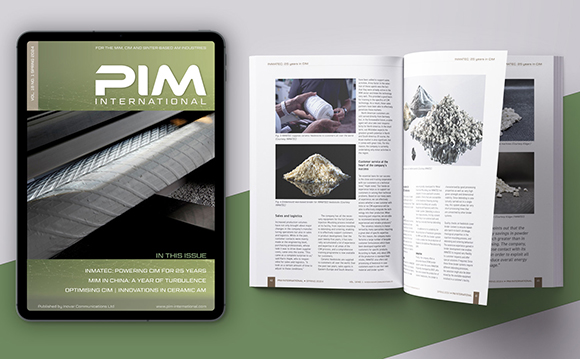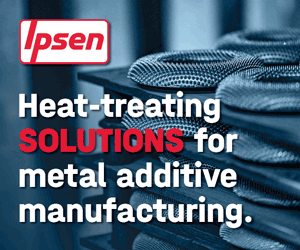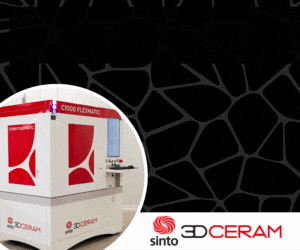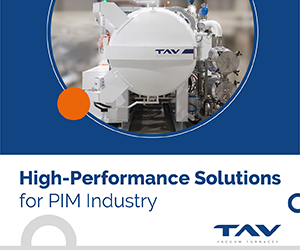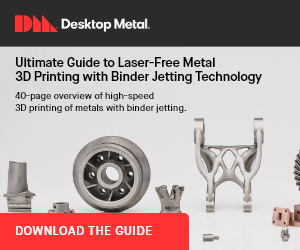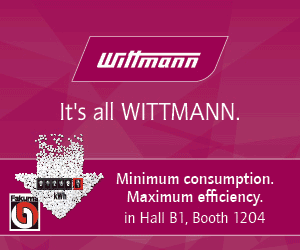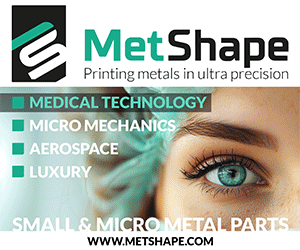Morgan Technical Ceramics highlights potential for CIM in energy efficient motors
May 19, 2012
The first requirements for electric motors due to the European Energy Using Products (EuP) directive came into effect in the summer of 2011 and many manufacturers, states Morgan Technical Ceramics, are now reviewing ways to make their products more efficient.
The aim of the directive is to reduce the environmental impact of energy using products and puts new restrictions in place for energy efficiency. It is relevant for all motors in the power range 0.75kW to 375kW and introduces a new mandatory scale for their efficiency. All motors must now meet the IE2 high efficiency standard and any motors not achieving this standard will be prohibited. The motor efficiency ratings are based on the efficiency classes defined in the IEC 60034-30 standard published by the International Electrotechnical Commission (IEC).
The requirements are being introduced in three stages. Tougher regulations for achieving higher energy efficiencies will be implemented in a second phase in 2015 and a final phase in 2017, whereby all 0.75 – 375 kW motors must be able to meet the IE3 standard, or meet the IE2 standard and be equipped with a variable frequency drive.
Approximately 70% of industrial energy demand comes from electric motors and the directive is expected to result in a dramatic reduction in CO2 emissions. In addition, it is estimated that changes made to energy using products will cut EU annual electricity consumption by 5%, resulting in energy savings worth around €12 billion.
Increasing energy efficiencies through motor design is just one consideration and further efficiencies can be achieved by looking at all aspects of product design, the manufacturing process and involving trusted suppliers at the initial design stages.
For example, choice of materials can have a significant impact on efficiencies and many manufacturers are turning to ceramic components to help. Morgan Technical Ceramics has been working with leading manufacturers, such as Grundfos, who fully realise the benefits of ceramic and pro-actively design the material into their products.
The company’s ceramic pump components are being used in circulator pumps. The requirements of circulator pumps, according to the EuP directive, will lead to a reduction in electricity consumption of 23 TWh a year by 2020 in the EU. This savings potential corresponds to the electricity consumption of 14 million people.
Stainless steel and other material components (such as shafts and bearings) continue to remain common in pump design. However, the material combination does not always offer the best abrasive wear resistance to limescale and black iron oxide particles found in heating systems. The gradual wearing of these components increases noise levels, reduces efficiency and can lead to pump failure.
Technical ceramic materials can be engineered to feature hardness, physical stability, extreme heat resistance and chemical inertness; all important characteristics to increase pump life and the efficiency of the whole system. The life cycle cost of the pump is significantly reduced by using ceramic shafts and bearings.
Ceramic is well known for being extremely hard (Rockwell Hardness of 75-86 R45N), second only to diamond. As such, it is incredibly hard wearing and hence ceramic components used in pumps have a long lifetime despite high speeds of more than 3000 rpm. Ceramic also has exceptional corrosion resistance in aqueous based pumping applications and is not affected by corrosion inhibitors or aggressive environments.
Shaft / bearing clearances can be manufactured within 10µm to ensure minimal pump running noise and provide optimum hydrodynamic lubrication. With the negligible wear of ceramic components over many years (unlike steel) the tolerance fit is maintained, which results in less vibration and less drain on the motor. As a result it delivers optimum efficiency.
Ceramic can also be machined to micron precision tolerances using state of the art diamond processing and grinding wheel technology. For example, on a rod 0.5 mm in diameter and 200 mm in length, tolerances of 0.5 µm roundness and 2 µm straightness can be achieved. In addition, the components can be produced in high volume.
While the mechanical properties of ceramic make it the ideal material choice, Ceramic Injection Moulding (CIM) is enabling the design of more complex ceramic components to further increase efficiencies.
For components requiring high precision and medium to high volumes, CIM can offer a solution when component complexity goes beyond the boundaries of more basic forming technologies such as dry pressing and is an alternative to CNC machining of ceramics when higher volumes are not viable.
The latest manufacturing techniques are enabling the design of more complex shafts to high precision, for example, smaller, fluted shafts with multiple grooves. Morgan Technical Ceramics has facilitated the design of a rotor that can be easily attached to the shaft by injection over-moulding. This enables manufacturers to reduce costs associated with assembly and the carbon footprint from manufacturing, while reducing time to market.
Chris Paine, Sales & Application Engineer at Morgan Technical Ceramics, suggests that key to the design process is engaging with a trusted supplier early in the development stages, which enhances design capabilities. Working together, engineers from both companies can review proposals and enhance the vision and aspirations for the project. This increases innovation and creates more open thinking in the preliminary design stages, eliminates waste from the design review cycle and provides better manufacturability and a more predictable product.
With greater demand to increase efficiencies and the introduction of the EuP motor directive, manufacturers are reviewing every element of product design. By using ceramic components, the latest manufacturing techniques and involving knowledgeable partners early in the design stage, increased product efficiencies and reduced life cycle costs can be achieved.
Morgan Technical Ceramics is a market leader in pump components, extrusions and precision seals, as well as technologies such as CIM. It specialises in medium to high volume production of technical ceramic components, providing engineered ceramic solutions to customers around the world and enabling them to increase product efficiencies.
The company has recently been selected as one of Grundfos’ Top 5 “Best Performance Suppliers” for 2010. This accolade demonstrates the exceptional operational and commercial performance Morgan Technical Ceramics consistently delivers to its customers.




